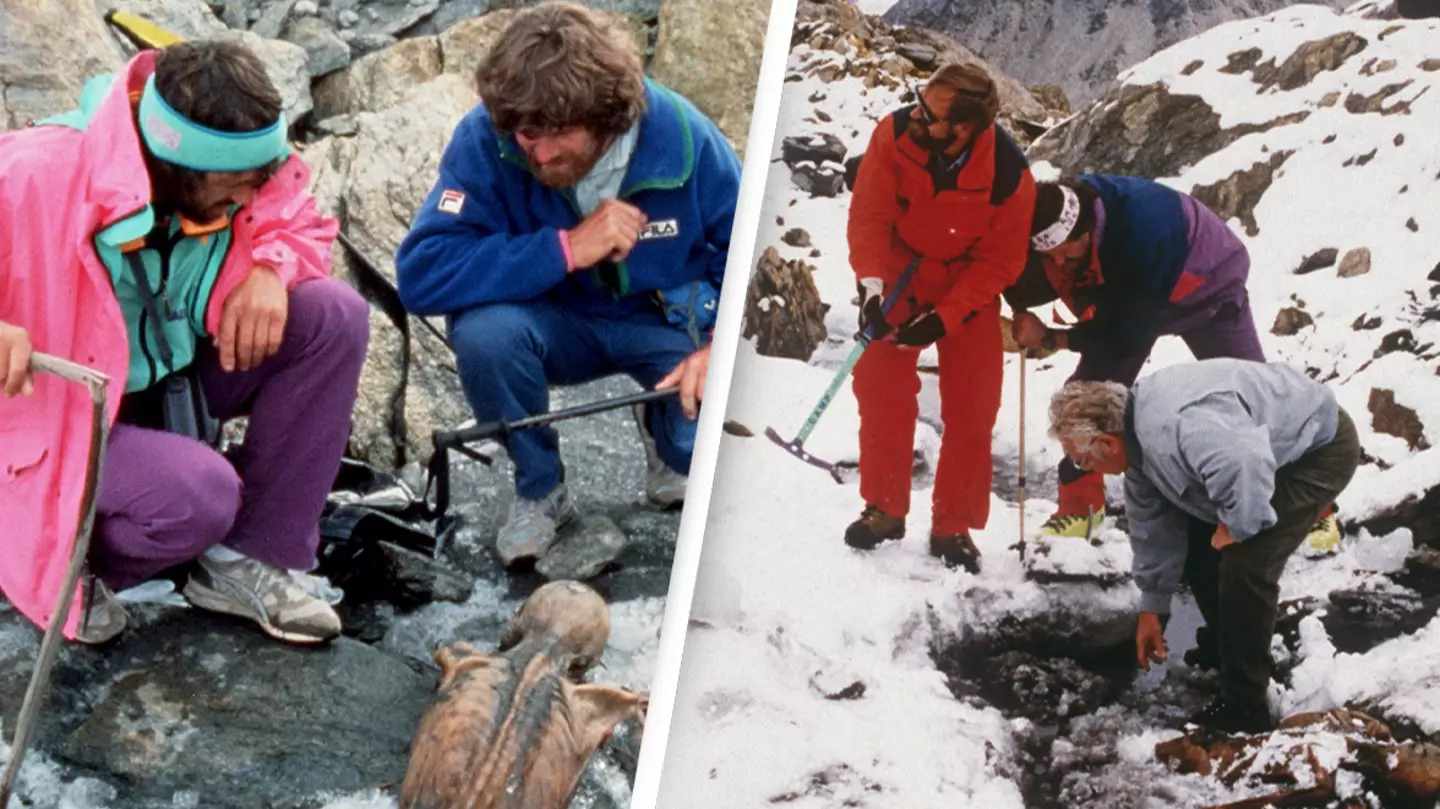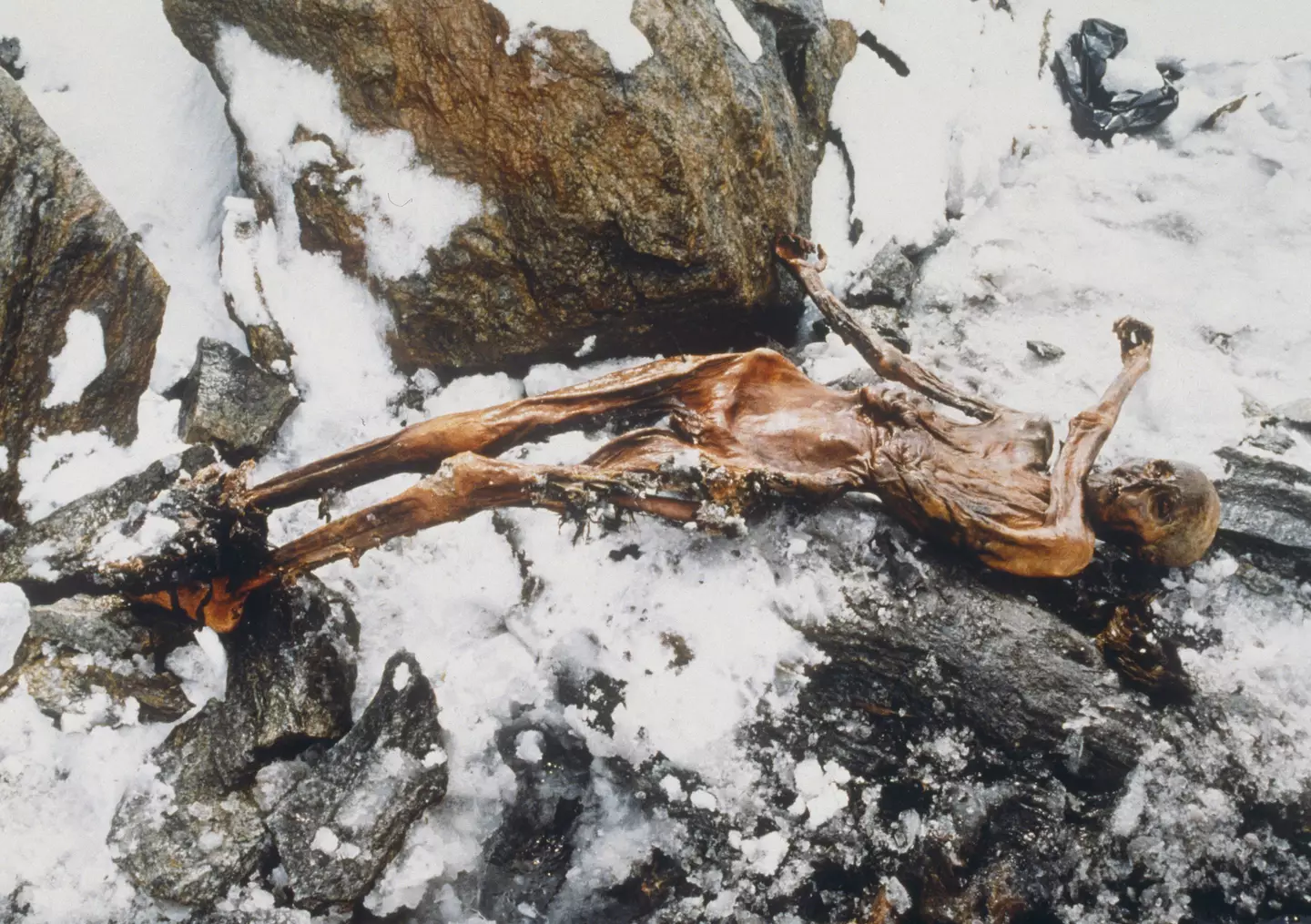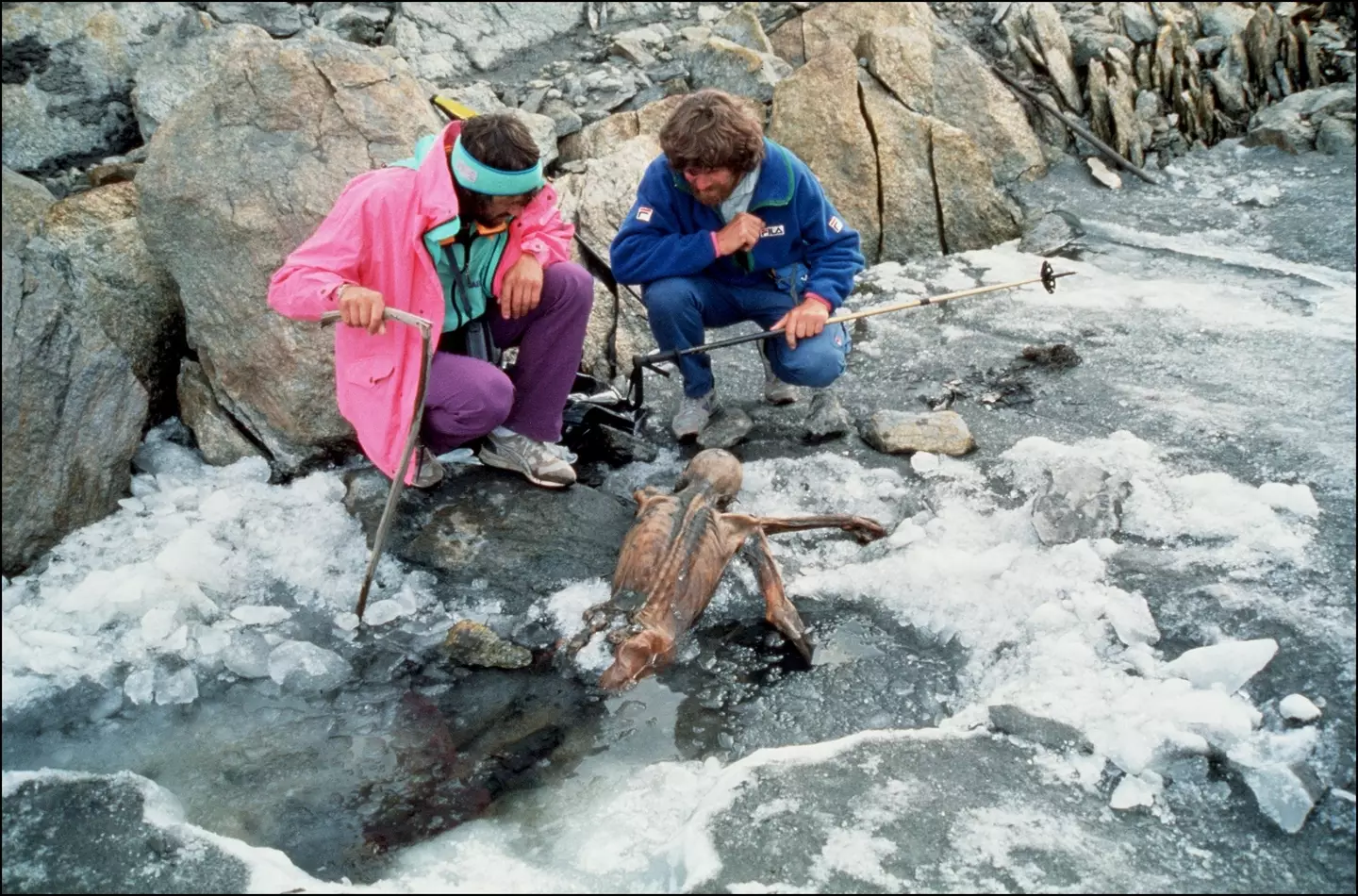
Tourists managed to find one of the greatest archeological discoveries ever after stumbling across a dead body that just happened to be 5,300 years old.
The monumental discovery has been called the ‘holy grail’ of glacial archaeology and came to be known as Ötzi or the Iceman.
He is now recognised as the oldest known natural human glacier mummy and provided a great look into the Europeans of the Copper Age.
Ötzi was found on September 19 in 1991 by two German tourists who were hiking towards Tisenjoch saddleback in the Ötztal Alps, a mountain range in Italy.
Advert

Their find quickly garnered international attention and likely made for one heck of a travel story to their friends back home.
The couple, Helmut and Erika Simon, believed they had stumbled upon a mountaineer who had recently died but were stunned when the reality became known.
When mountain officials attempted to recover the body they found that the body was frozen in ice below the torso.
Advert
It took three days for the body to be fully recovered and was promptly examined by archeologists who determined it was at least four thousand years old. This estimate was based on the typology of an axe that was found among the retrieved objects.
So how did the body survive all this time?

Well, scientists believe that because the body was covered in ice not long after Ötzi’s death, it had only partially deteriorated.
Advert
Following the discovery, archaeologist Konrad Spindler took control of the investigation and began to formulate a theory regarding what happened to the Iceman.
Spindler’s theory, or disaster theory as it is also known, suggested Ötzi fled across the moutains from the south in late summer or early fall.
After some form of violent encounter, some of his equipment suffered damage and he had no time to repair it.
He eventually died in a snow-free gully near the pass and was essentially freeze dried. He was then buried under mountain snow and his body preserved.
Advert
There still remains a debate around whether Ötzi died due to his difficulty or whether he was murdered due to the discovery in 2003 of an arrowhead in his shoulder.
Ötzi is now kept in a custom cooling chamber at a museum in Bolzano, Italy, where tourists go to discover the stunning story of the oldest mummified human in Europe.
Topics: Science, News, World News